The US asset management industry is as action packed as a Micheal Bay movie right now if you get what I mean.

From ETFs that are making hedge fund caliber portfolios accessible to common investors to democratizing access to previously inaccessible asset classes & strategies to innovation in fund structures, the activity is explosive!
The Vanguard effect, AKA Bogle’s folly
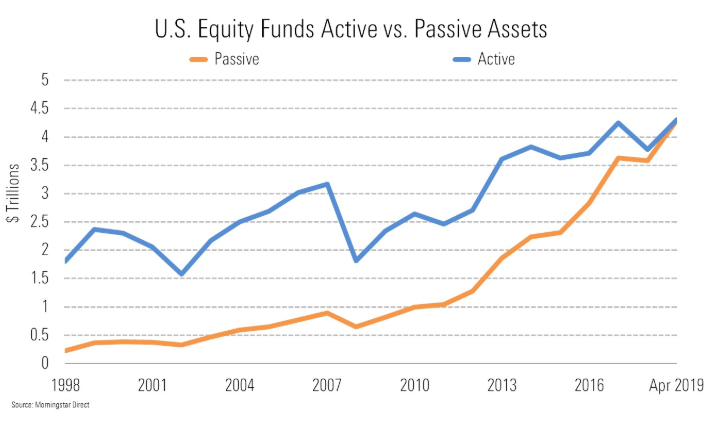
All the activity is making me pity the Indian mutual fund industry, which is still busy launching closed-ended funds. But we’ll get there, investors will sooner or later wake up.
Anyway… a couple of weeks ago, Vanguard – the ultimate champion of the little guy and the world’s second largest asset manager hit $1 trillion in US ETF assets. If you’ve never heard of Vanguard, then don’t worry, you probably aren’t alone. The Vanguard S&P 500 index fund with $449.2 billion in assets is bigger than the entire Indian mutual fund industry.
The growth of the giant!
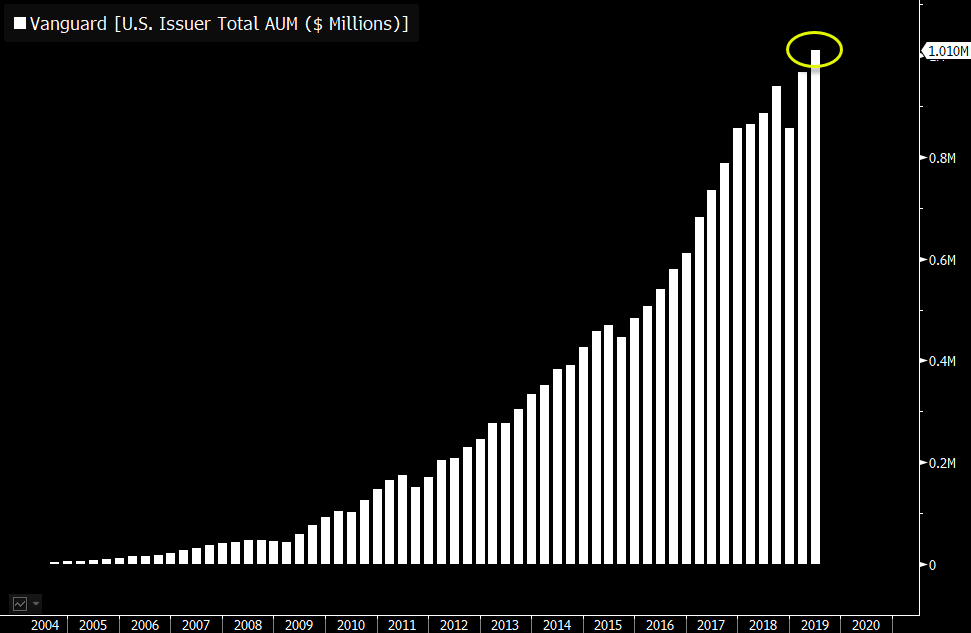
Vanguard is now second only to Blackrock iShares. In hindsight, it probably would have been first if not for Jack Bogle’s virulent opposition to ETFs.
Do you want an idea of how big Vanguard is just in case?
Total passive market share – index funds and ETFs
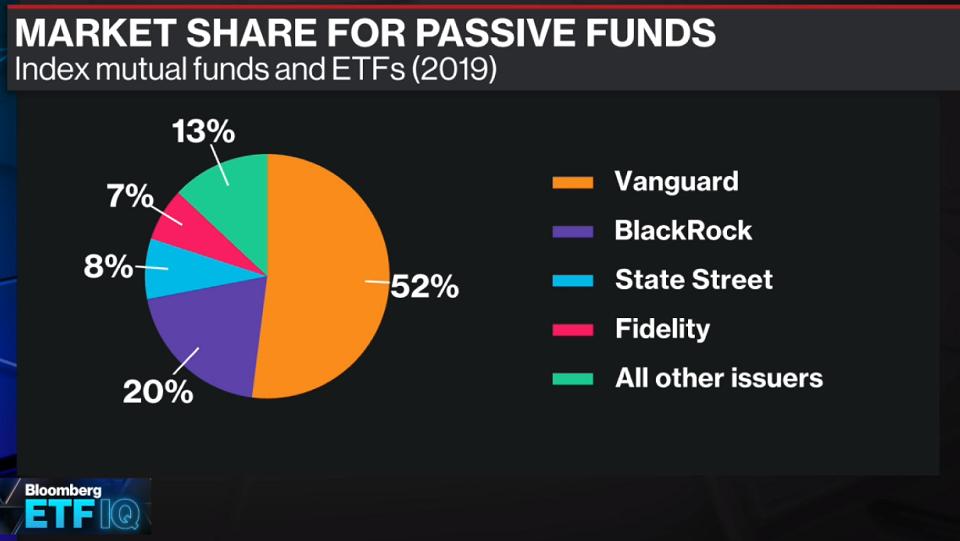
The 20 biggest Exchange Traded Fund (ETF) issuers in the United States
| Brand | AUM ($, mm) |
| iShares | 1563862.61 |
| Vanguard | 1023336.93 |
| SPDR | 649173.03 |
| Invesco | 202530.22 |
| Schwab | 145077.5 |
| First Trust | 76983.15 |
| WisdomTree | 39276.67 |
| VanEck | 37284.24 |
| ProShares | 31572.13 |
| JPMorgan | 28874.18 |
| PIMCO | 19236.58 |
| FlexShares | 15864.04 |
| Fidelity | 14085.66 |
| Xtrackers | 13754.81 |
| Direxion | 13080.62 |
| Goldman Sachs | 12623.45 |
| Global X | 10710.49 |
| Alerian | 8751.48 |
| Pacer | 4583.16 |
| UBS | 4197.08 |
| Source: ETF.com |
Despite having a late start, Vanguard has quickly garnered market share is quickly closing the gap with Blackrock iShares. To put that in context, State Street launched SPY (SPDR S&P 500 Trust ETF) in 1993 and the sector spiders (sectoral ETFs) in 1998. Morgan Stanley launched World Equity Benchmark Shares (WEBS) in 1996, managed by Barclays Global Investors, which was acquired by Barclays and rebranded as iShares, which in turn was acquired by Blackrock in 2009.
The transparency, tax efficiency, and low costs compared to mutual funds have made ETFs popular among institutions and advisors alike.
Today, the top 3 ETF issuers – iShares, Vanguard, and State Street have a market share of 80%!
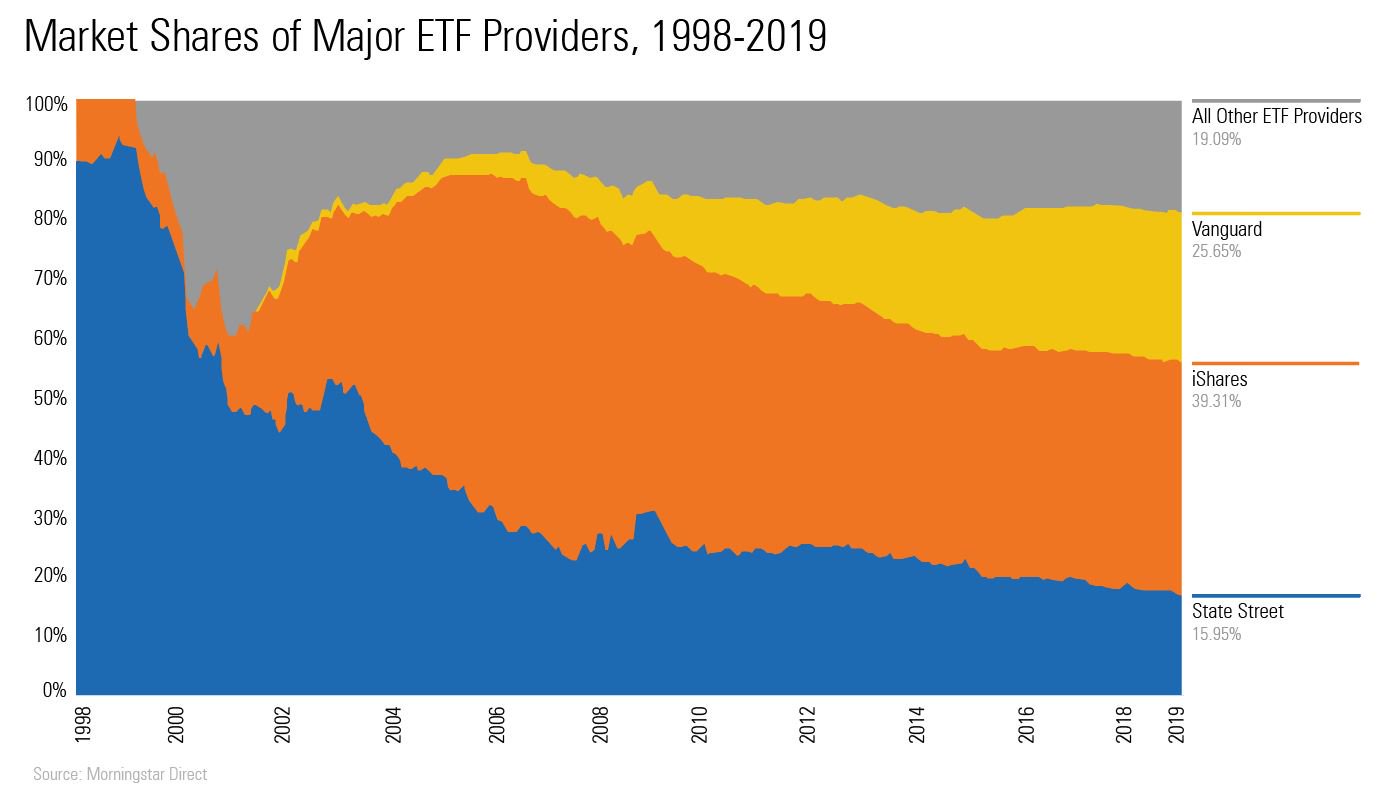
Vanguard is quite literally gobbling up the fund flows without doing nothing. Here’s how the top 3 are just murdering it
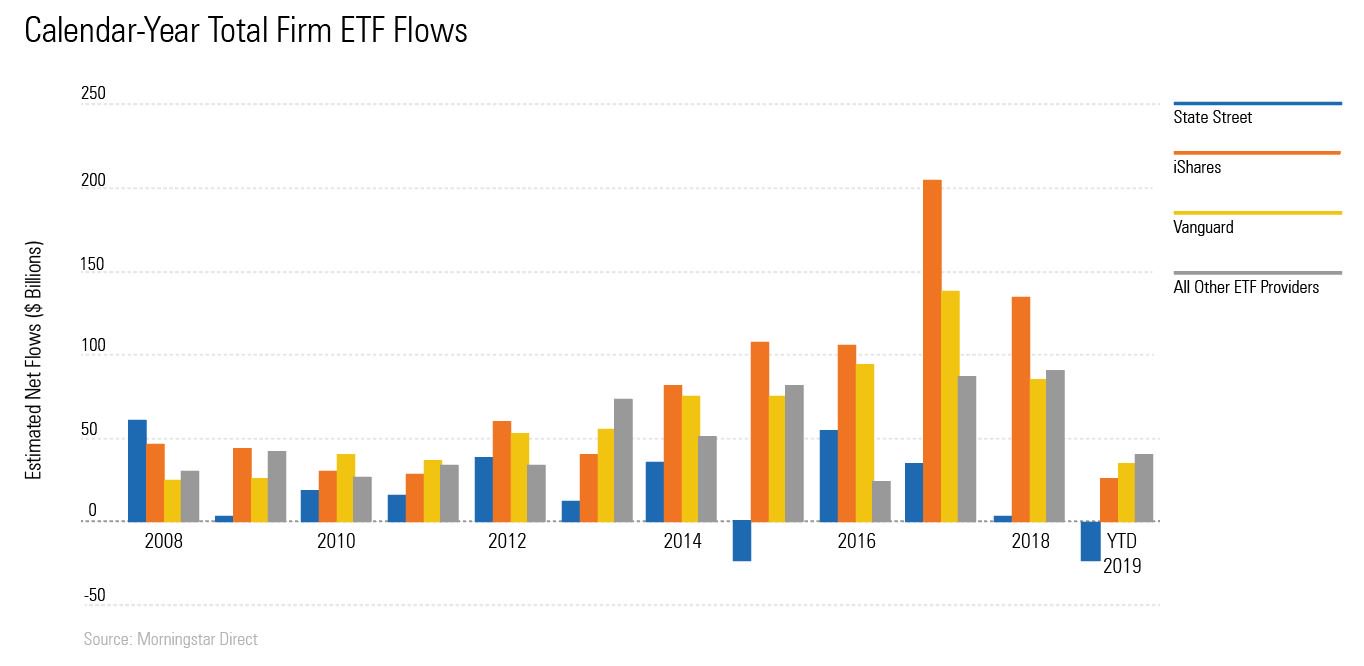
To further highlight how brutally Vanguard has just dominated the flows

When comes to taxable bond ETFs, Vanguard is in a league of its own
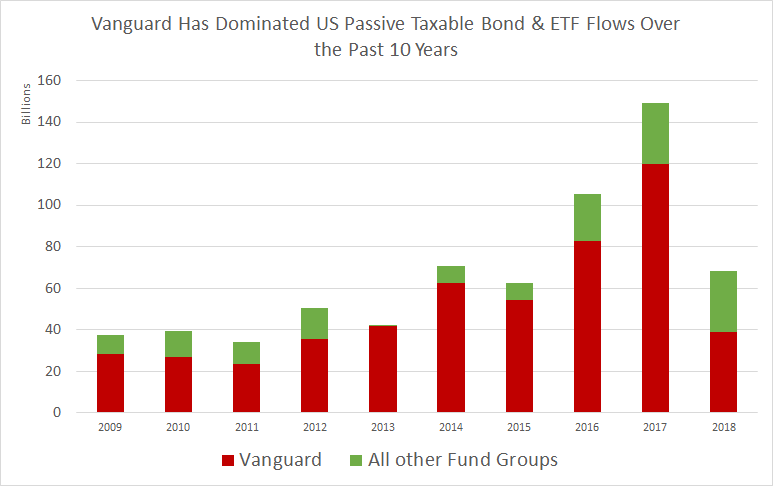
The Vanguard formula
What sets Vanguard apart from any asset manager on the planet is its unique ownership structure. Vanguard is true to the label mutual company. Meaning, Vanguard is owned by its funds, which are in turn owned by the investors. This gives Vanguard a unique advantage of not having to bend over backwards to meet quarterly targets and to cater to shareholder whims.
All it cares about is its investors and serves no other masters.
This in a way set Vanguard to do the right thing – drive costs down to bargain-basement levels. It not only drove the costs of Vanguard funds down but has dragged the entire US asset management industry along with it.

Over the last 15 years, the weighted average expense ratio for index funds has dropped from 0.28% to 0.09%, while the weighted average expense ratio for actively managed funds has fallen from 0.83% to 0.58%. Our research shows that without the option of index funds, investors would have paid nearly $200 billion in additional costs since the early 1990s.
Tim buckley, CEO, Vanguard
Vanguard has such a reputation for slashing costs, there’s a term – “the Vanguard effect”. Here’s “the Vanguard effect” visualized
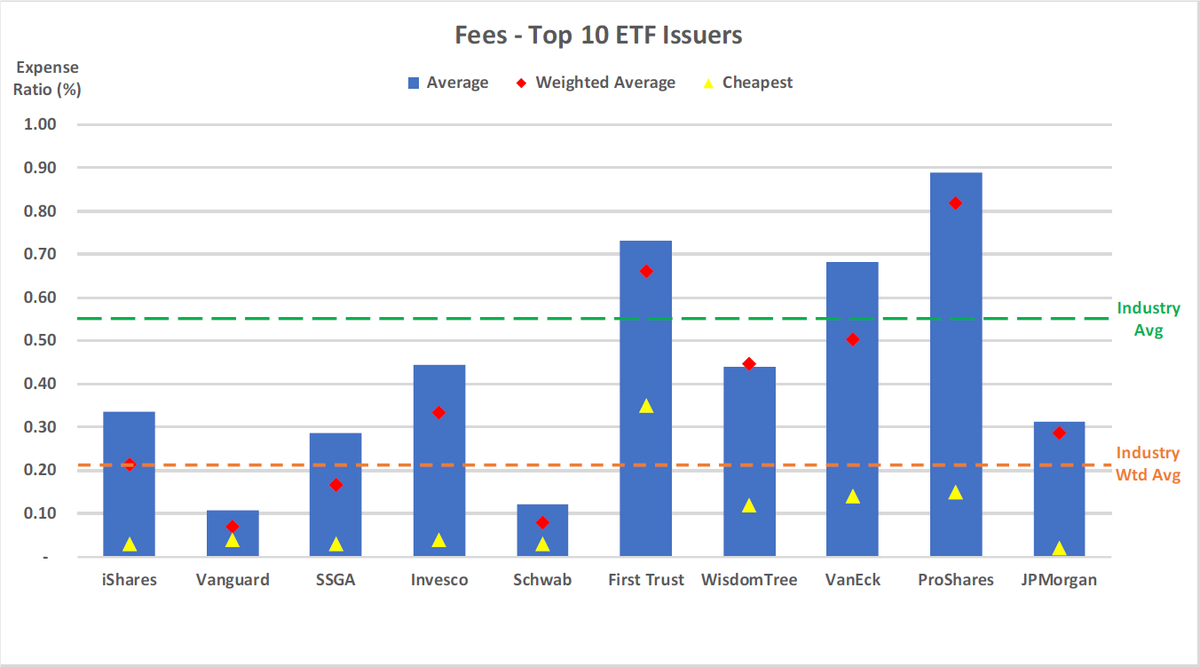

The amazing thing about ETFs is that they have truly broken barriers to investing and have opened up vast swathes of the markets to common investors. The rise of ETFs has also coincided with the “The Great Cost Migration” as Eric Balchunas of Bloomberg put it from high-cost funds to low-cost funds.
I thought this blog was about Indian markets, why the hell am I reading about the US market?
Where the US markets go, we follow! If you are an investor or an advisor or a distributor, the age of ETFs will be soon upon us in India. Today we have about 70 odd ETFs in India vs. over 2200 ETF in the US. In India, the growth in ETF AUM is almost entirely due to the govt.
Out of the 70 ETFs, most ETFs just track the 3 major indices – Nifty 50, BSE Sensex, and Nifty Next 50. But fund houses are slowly launching ETFs, with an eye on the future, probably? In the past couple of years, we saw the launch of a few Value and Quality smart beta ETFs. Edelweiss recently won the mandate to launch a PSU debt ETF. Apart from Liquid ETFs and Gilt ETFs, we don’t really have a debt ETF. Fund houses have also been launching FOFs for ETFs, which should increase the underlying liquidity. The Indian ETF scene isn’t up and kicking but it isn’t in a lull either.
If you are an advisor, take note! 88% of all advisors in the US use ETFs to implement client portfolios. I also understand that this isn’t a straight forward comparison given the advisors can trade on behalf of the clients in the US and it isn’t yet possible in India. Moreover, the rise of all-in-one investment management platforms, model marketplaces, and trading tools for advisors in the US have made the usage of ETFs all the more popular. Moreover, In India, we hardly have advisors, to begin with. Out of the 1200 odd RIAs, most are stock tipsters.

To further highlight the nascence of the Indian ETF scene, the average volume of SPY, the world’s largest and most traded ETF is about $18 billion, SBI Nifty ETF, the biggest ETF in India traded just Rs 6.8 cr on a high volume day like the budget day.
PS: SPY is also the world’s most traded security with an AUM of $271 billion.

The growth of ETFs in India

The Employees’ Provident Fund Organisation (EPFO) can invest up to 15% in equities and ETFs have been the chosen vehicle. The govt also chose the ETF route for its disinvestment program. By offering discounts, the govt has marketed the shit out of CPSE ETF and Bharat 22, both of which are absolutely horrible for the investor but good for the popularity of ETFs.
In the budget announcement, the govt also decided to extend the ELSS like tax benefit under section 80C to CPSE ETFs which will further make ETFs popular. ETFs require a Demat account and given that there are only 89.6 lakh active non-unique Demat accounts, the Indian ETF story is the story of retail participation.

Mutual funds don’t need Demat accounts, and it is easy for distributors to shove 5 close-ended funds a smallcap fund down an investor’s throat, which isn’t possible with ETFs. Moreover, given that ETFs are low-cost vehicles and investments in India are push products, AMCs don’t have an incentive to spend heavily on them.
But ETFs are like the 21st-century version of mutual funds. They are transparent, efficient, and are almost always cheaper than similar mutual funds. They are good for investors and allocators alike. Institutional allocators have played a big role in the rising popularity of ETFs in the US, and the same has to be the case in India.
The bottom line – ETFs are coming!
Special thanks to Eric Balchunas, Nate Geraci, Athanasios Psarofagis, Morningstar Research, Bloomberg ETF IQ, and India ETFs for sharing these amazing graphics on ETFs.
